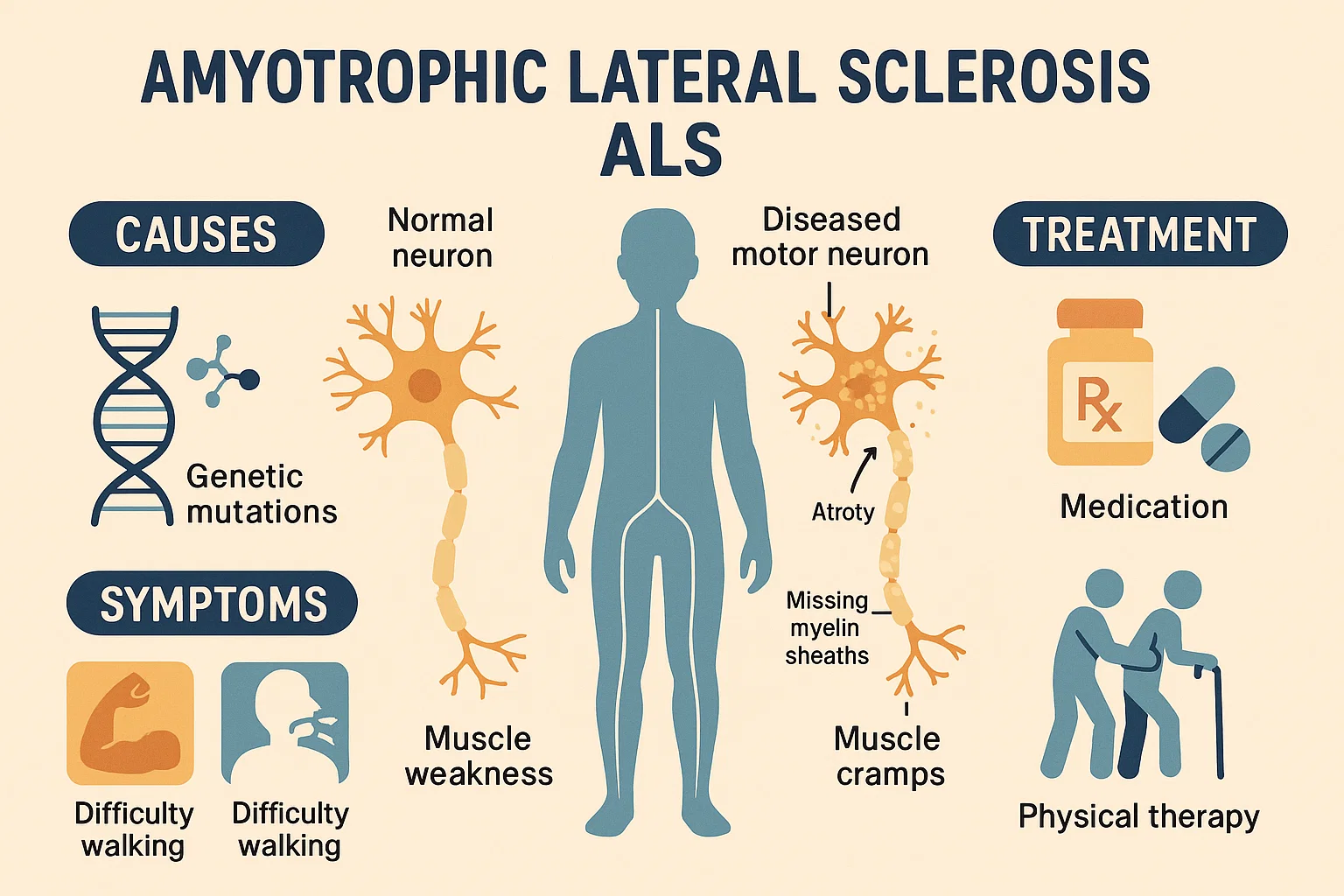Navigating ALS: Considering all options
A diagnosis of ALS (amyotrophic lateral sclerosis) is often unexpected and deeply challenging. As a progressive condition that gradually affects movement and breathing, it can reshape the future in significant ways. While there’s no cure, there are meaningful ways to plan, adapt, and live fully. This article takes a close look at care strategies, everyday practicalities, emotional well-being, emerging science, and the future-facing option of cryopreservation.

Symptom management and daily support
Managing ALS starts with understanding what’s changing and how to respond:
Physical support and equipment: Devices like walkers, wheelchairs, or ceiling lifts maintain mobility. Non-invasive ventilation devices assist breathing as muscles weaken. Eating tools, feeding tubes, or communication aids support nutrition and interaction.
Home adjustments: Lowered countertops, wide doorways, adaptive bathrooms, and smooth floors help maintain safety and prevent fatigue.
Routine planning: Spacing tasks between rest, grouping appointments, and maintaining small daily achievements boosts independence.
Swallowing and speech support: Swallowing exercises, modified diet, and communication aids become vital as symptoms evolve.
Emotional well-being and support networks
ALS isn’t just physical, it impacts emotions, relationships, and identity:
Peer groups offer invaluable understanding and shared experience.
Counseling supports individuals and families in processing grief, anxiety, and changing roles.
Family involvement, ensuring caregivers are supported, rested, and equipped to help.
Creating shared memories: stories, voice recordings, letters, small legacies that strengthen connection and meaning.
Daily life: Planning, comfort, and dignity
Living with ALS responsibly means intentional adjustments:
Prioritize quality of life: Rest, enjoyable activities, connection matter as much as interventions.
Nutrition and hydration: Adjusted for swallowing, ensuring strength and comfort.
Breathing exercises: Gentle breathing routines can ease respiratory strain.
Mindful routines: Guided relaxation, music, or calming rituals support mental health.
Advanced planning: Legal directives, care preferences, and having conversations early, foundational for choices ahead, echo themes from end-of-life guides .
Emerging research and innovation
Though progressive, ALS care is advancing in meaningful ways:
Biomarker and monitoring tech help track progression and guide planning.
Assistive-tech breakthroughs like AI-enhanced communication systems offer new independence.
Stem cell and gene research are in development, offering cautious hope at a distance.
Clinical trials of experimental treatments provide options for those seeking them.
These developments don’t offer cures today, but they do inform decision-making and hope.
Community resources and care integration
Finding appropriate care means accessing the right support:
Multidisciplinary clinics combine neurology, therapy, nutrition, respiratory support, and planning services.
Insurance and financing guidance help reduce barriers to devices and home modifications.
Respite and caregiving networks, giving caregivers time to recharge is essential.
Advance planning coordination, helping you prepare for legal, logistical, and emotional shifts, even partnering with hospice when focus shifts to comfort
A future option: Cryopreservation
A terminal diagnosis like ALS often triggers reflections about what lies beyond. Cryopreservation isn’t a cure, but it is a future-facing path. It preserves individuals at legal death, with the hope that future technology may open doors not available today.
At Tomorrow.bio, we offer compassionate, transparent cryopreservation. We understand the complexity, fear, loss, love, hope. If you’re considering what comes next, even beyond today’s horizon, we’d welcome a conversation. We can explain how cryopreservation works, what it could mean, and help you think it through with clarity and care.
Charting your path
Living with ALS invites consideration of:
- Practical care and communication aids
- Daily routines that preserve dignity and rest
- Emotional care and legacy creation
- Emerging technologies and trials
- Integrated support from multidisciplinary teams
- A future-minded option like cryopreservation
Each piece contributes meaning, clarity, and agency in a journey no one should face alone.
If you’re navigating ALS, or thinking ahead, reach out. Whether you're exploring current care options or considering cryopreservation as a way to preserve future possibility, we’re here to offer guidance, clarity, and compassion along every step.
About Tomorrow.bio
At Tomorrow.bio we are dedicated to advancing the science of cryopreservation with the goal of giving people a second chance at life As Europe’s leading human cryopreservation provider we focus on rapid high-quality standby, stabilization and storage of terminal patients preserving them until future technologies may allow revival and treatment.
Our mission is to make human cryopreservation a reliable and accessible option for everyone We believe that no life should end because current capabilities fall short.
Our vision is a future where death is optional where people have the freedom to choose long-term preservation in the face of terminal illness or fatal injury and to awaken when science has caught upInterested in learning more or becoming a member
📧 Contact us at hello@tomorrow.bio
🌐 Visit our website www.tomorrow.bio
🤝 Schedule a call with our team Book a consultation



